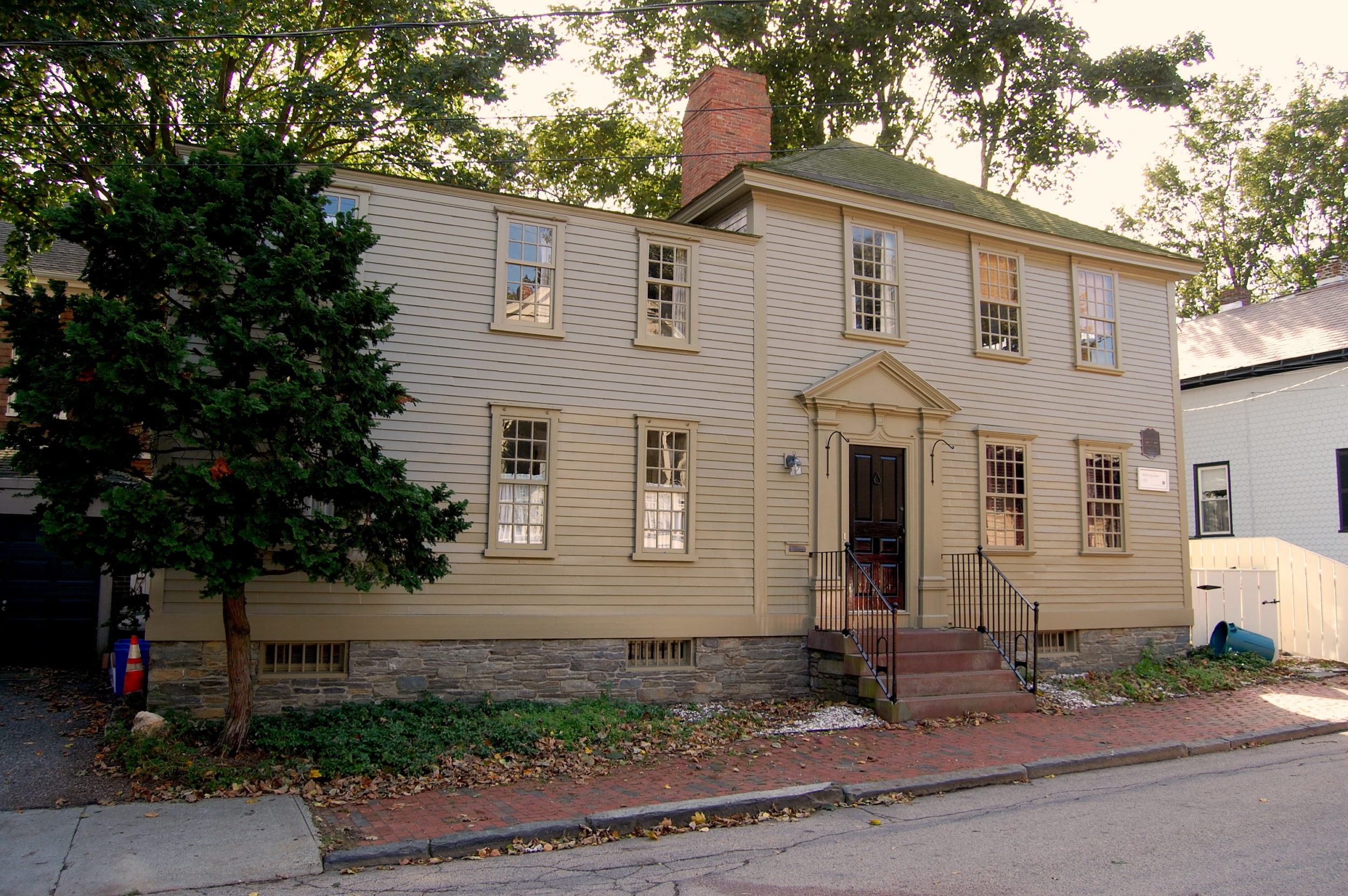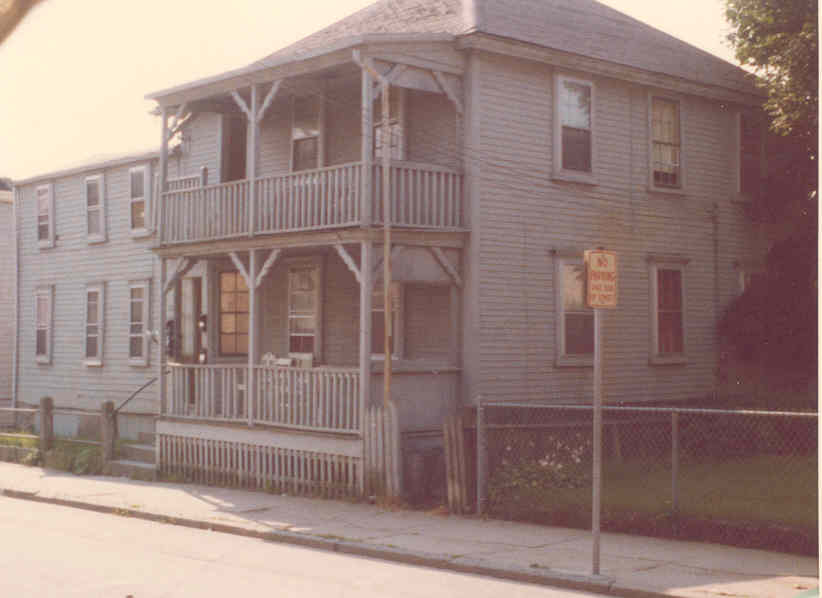Architectural story:
Built ca.1725, 30 Walnut Street is a square, hip-roof building constructed with three bays and an interior chimney. To provide more living space for this otherwise small building, an eighteenth-century, two-story structure was added. It is believed that the house was originally located on the corner of Willow and Washington Streets and sometime after 1758 was moved to Walnut Street. This is indicated by The Stiles Map of 1758, which shows the house at its original site at Willow and Washington Streets in that year. NRF purchased the building in 1973 and restored it in 1976-77.
Restoration story:
When the building was purchased, there was a full-width, two-story porch across the front of the house, as well as several one- and two-story additions to the side and rear. Almost all of the property’s land area was covered with these additions, which were removed during restoration. The original chimney had been removed earlier, but several surviving mantels gave a good sense of placement and size of the original stack. This allowed the building of a new interior chimney in the space of the original. In addition to the 18th-century mantles, there were also quite a few period doors, bits of trim, and chair rails scattered throughout the house.
The original stairway remained in place and includes carved scrolls that resemble the work of the Townsend family of cabinetmakers and joiners.
When the porches were removed from the Cory House, no indication of the original doorway style was evident (sometimes, the ghost of the original doorway pattern can be seen on the exterior planks). The NRF architect drew a design of flat pilasters on bases, with molding around the door rising in curves and supporting a molded square just below the entablature. This doorway is essentially a collection of known elements put together to form an appropriate replacement for the original.
People story:
The information we have on the early history of the house comes from The Architectural Heritage of Newport, Rhode Island by Antoinette F. Downing and Vincent J. Scully, Jr. It appears that the earliest date for the house, ca.1725, is based on construction details and materials. Edith Cory owned the house before 1770 and Katherine Bristoe is listed as the owner just prior to the Revolution. There is no further information on either of these two women.
Deeds indicate that Edmund Townsend bought the house (Quaker Lot #104) in 1795 and sold it to his son, Captain James Townsend, in 1809. It is not clear, however, if Edmund bought the house at the Willow and Washington Streets location or at the Walnut Street location. Edmund was a cabinetmaker who worked from his own shop. His son James was involved with shipping, and owned several vessels with various partners. It is not clear if James spent his time at sea in command of ships, or if his efforts were primarily of a business nature. It is apparent from some account books, however, that he shipped a fair amount of furniture from family shops, as well as a variety of other goods, mostly along the east coast and into the West Indies.



